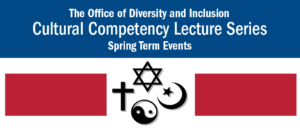Be a part of the next three sessions of Buddhist meditation and practice with Matty Wegehaupt at the Center for Spiritual and Religious Life April 25, May 2 and May 9 from 5:30 to 6:45 p.m. in Sabin House. Times have been adjusted so check your calendars. Please plan to attend the entire series. Open to all members of the LU community. Send RSVP to Matty Wegehaupt at matthew.wegehaupt@lawrence.edu. For more information, email spiritual.religious.life@lawrence.edu.


